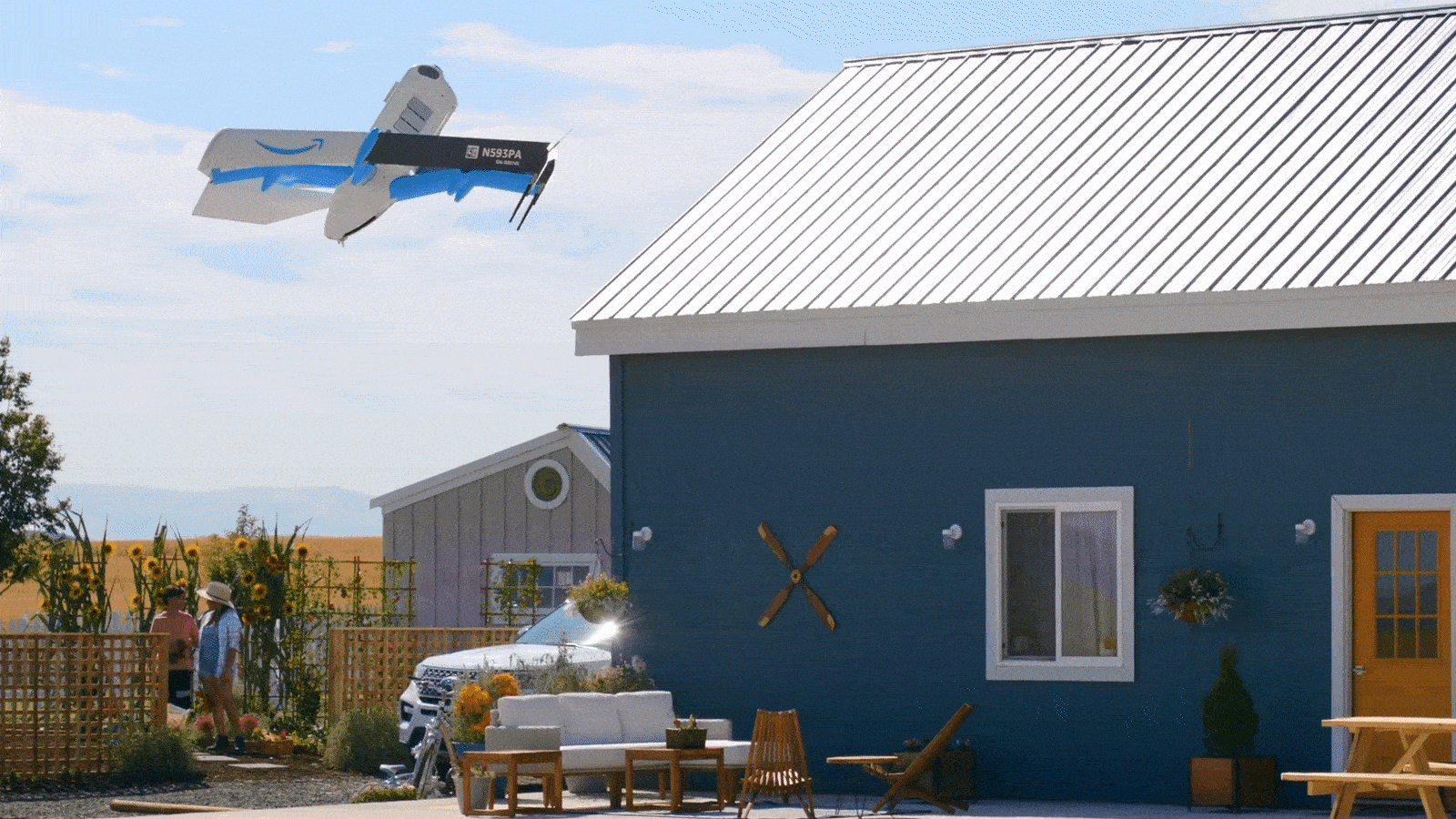|
Listen to this article |

Amazon Prime Air expects to expand its delivery range with the expanded exemptions from the FAA. | Credit: Amazon
The Federal Aviation Administration requires commercial drone operators to maintain line of sight with their drones until a technology safely enables beyond visual line-of-sight, or BVLOS, operations. The ability to pilot a drone by relying on instruments for control rather than direct line of sight is essential for scaling complex operations. Last week, Amazon Prime Air reported that it has received additional BVLOS permissions from the FAA.
Amazon Prime Air said the additional permissions for BVLOS drone operations will allow it to expand its package-delivery services. To obtain this permission, the company developed an onboard detect-and-avoid system to ensure that its drones can detect and avoid obstacles safely. This system has undergone years of development, testing, and refinement, it said.
“Our vision has remained unchanged since we started working on Prime Air: to create a safe and scalable way to deliver packages to customers in 30 minutes or less using highly autonomous drones,” said Amazon in a blog post. “To achieve our goal of delivering 500 million packages, per year, by drone, by the end of this decade, we knew we had to design a system capable of serving highly populated areas and that was safer than driving to the store.”
Amazon provides drone details to FAA
Amazon explained that it submitted engineering information to the FAA detailing the design, operation, maintenance, and validation of its system and detect-and-avoid capability. The company conducted flight demonstrations for FAA inspectors, demonstrating safe navigation in real-world scenarios, including interactions with planes, helicopters, and even a hot air balloon.
Extensive analysis and test data further validated the system’s safety, leading to FAA approval for BVLOS operations, said Amazon.
The waivered regulations include 14 CFR § 107.51(c), the “Operating limitations for small unmanned aircraft – Visibility.” The exemption waives the visibility required and allows operations when the flight visibility as observed from the location of the control station is less than 3 statute miles (4.8 km).
The other regulation waived is 14 CFR § 107.51(d), the “Operating limitations for small unmanned aircraft – Cloud Clearance.” This allows uncrewed aerial system (UAS) operations without meeting minimal clearance requirements of remaining 500 ft. (152.4 m) below clouds.
The FAA has recently also granted BVLOS waivers to American Aerospace and a contract to uAvionix, and the FAA’s reauthorization will likely lead to more drone deliveries.
 Submit your presentation idea now.
Submit your presentation idea now.
Prime Air to expand drone delivery area
This new authorization allows Amazon Prime Air to expand its drone delivery area in College Station, Texas, enabling more customers to choose from thousands of items, including household essentials, beauty products, and drugstore items. Prime Air had already been testing in Northern California and plans to serve around Phoenix.
Later this year, drone deliveries will integrate into Amazon’s delivery network, deploying from facilities next to Same-Day Delivery sites for faster delivery of a wider selection of items.
Safety remains a top priority, said Amazon. The company said its onboard technology will ensure compliance with strict safety standards as it expands its delivery reach.
In 2020, the FAA gave Amazon an Air Carrier Certificate, allowing the company to operate as an airline and deliver small packages via drone. With this Part 135 certification and the newly granted BVLOS permissions, Prime Air said it is positioned to scale drone delivery for more densely populated areas.
